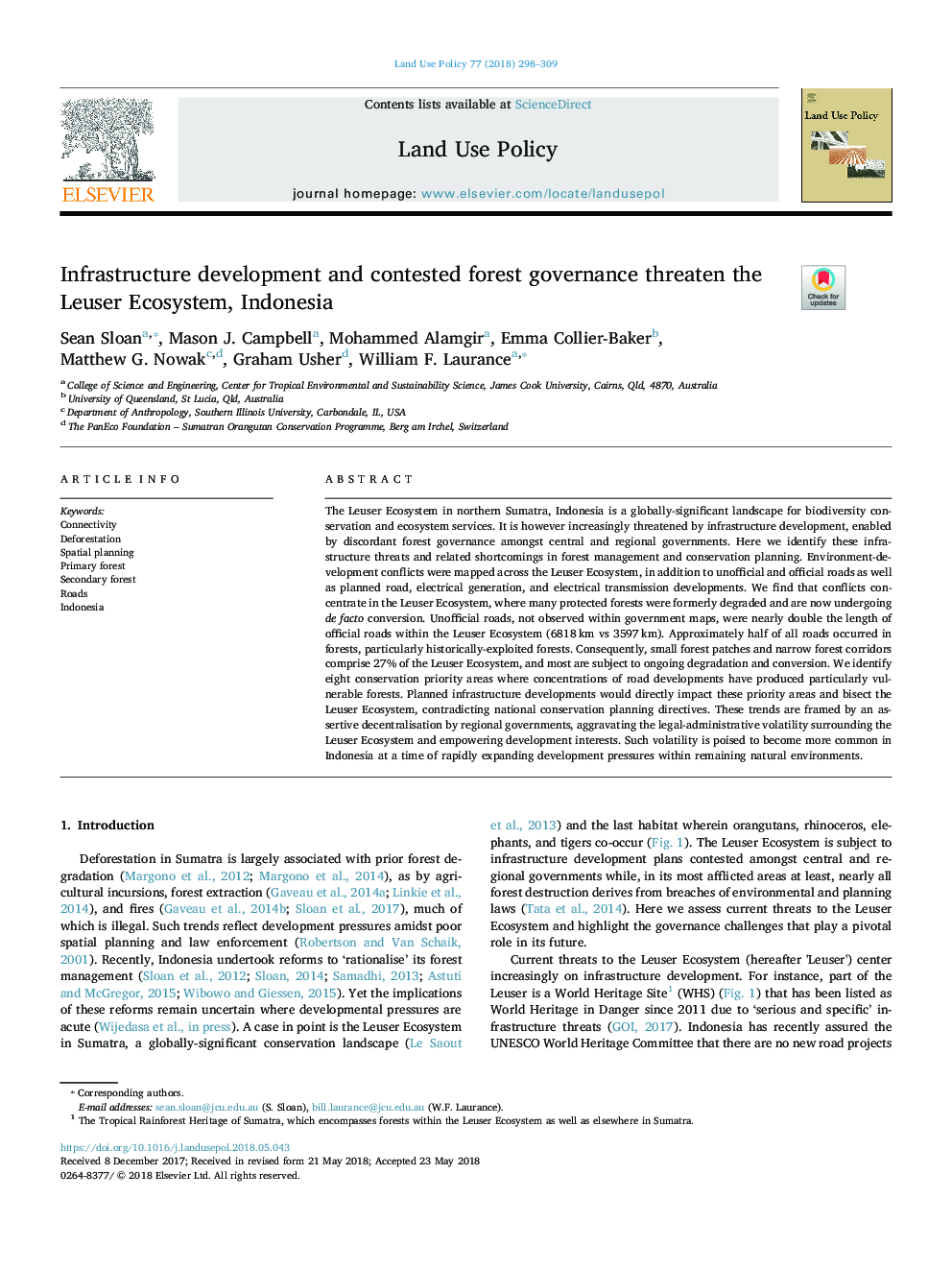| Article ID | Journal | Published Year | Pages | File Type |
|---|---|---|---|---|
| 6546148 | Land Use Policy | 2018 | 12 Pages |
Abstract
The Leuser Ecosystem in northern Sumatra, Indonesia is a globally-significant landscape for biodiversity conservation and ecosystem services. It is however increasingly threatened by infrastructure development, enabled by discordant forest governance amongst central and regional governments. Here we identify these infrastructure threats and related shortcomings in forest management and conservation planning. Environment-development conflicts were mapped across the Leuser Ecosystem, in addition to unofficial and official roads as well as planned road, electrical generation, and electrical transmission developments. We find that conflicts concentrate in the Leuser Ecosystem, where many protected forests were formerly degraded and are now undergoing de facto conversion. Unofficial roads, not observed within government maps, were nearly double the length of official roads within the Leuser Ecosystem (6818â¯km vs 3597â¯km). Approximately half of all roads occurred in forests, particularly historically-exploited forests. Consequently, small forest patches and narrow forest corridors comprise 27% of the Leuser Ecosystem, and most are subject to ongoing degradation and conversion. We identify eight conservation priority areas where concentrations of road developments have produced particularly vulnerable forests. Planned infrastructure developments would directly impact these priority areas and bisect the Leuser Ecosystem, contradicting national conservation planning directives. These trends are framed by an assertive decentralisation by regional governments, aggravating the legal-administrative volatility surrounding the Leuser Ecosystem and empowering development interests. Such volatility is poised to become more common in Indonesia at a time of rapidly expanding development pressures within remaining natural environments.
Related Topics
Life Sciences
Agricultural and Biological Sciences
Forestry
Authors
Sean Sloan, Mason J. Campbell, Mohammed Alamgir, Emma Collier-Baker, Matthew G. Nowak, Graham Usher, William F. Laurance,
